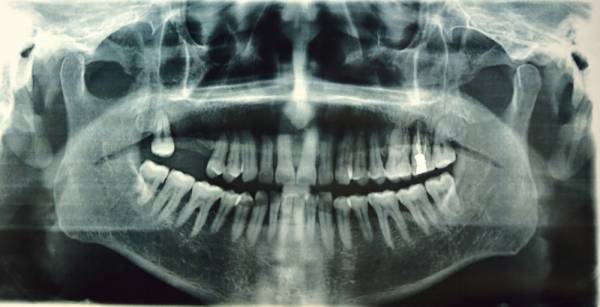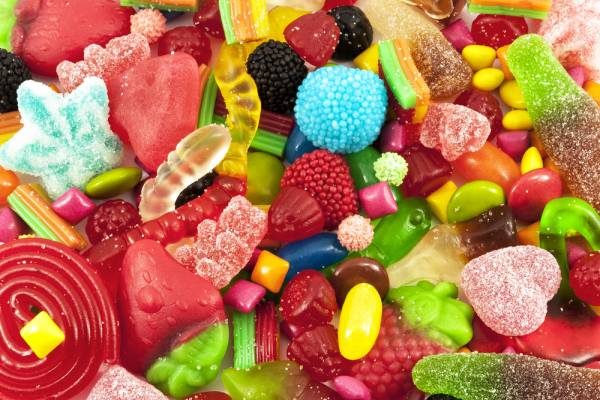It always bothered me, that despite being meticulous about how I care for my teeth, I always got cavities anyway.
It’s a common scenario. We go to the dentist for a cleaning and hope we have no cavities. If we do, we schedule another appointment to get numb with Novocain, drilled, filled, and billed. (The best part is dribbling water all over you trying to drink an hour later.)
But I refused to accept that cavities just happen. It bothered me even more than the dentist trying to talk to me as my mouth was wide open getting scraped. There had to be an answer that went beyond the typical pep talk of more flossing, brushing, and rinsing with the samples we get in that little goodie-bag on the way out.
As it turns out, the answer is quite complicated. Here’s a brief overview of how cavities happen and what we can do about it from a nutrition standpoint. It is a twofold answer, as there are things we can do for the outside of the tooth and also things we can do internally.
The Importance of Oral Bacteria
Often, when scientists study an environment’s health, they look for frogs and toads. Since these animals absorb toxins through their skin, they are a pretty good first-line indicator of how toxic an environment is as a whole. If the frogs are dead, things are heading in a bad direction.
“If you’ve had cavities as a kid and continue to struggle with them even with a solid diet, you may need to do more.“
Our bodies work the same way, except our “frogs” are bacteria in the body. A lot has been said about gut bacteria, but we also have a diverse array of bugs in our mouth. Cavities start (or stop) depending on the health of the bacteria in our mouth.
We have what is called a biofilm in our mouth and on our teeth. The biofilm is created by the bacteria to help itself thrive. Think of it as building its own house. It attaches to our teeth and begins producing extracellular polysaccharides (EPS) that help it maintain a protective environment to grow within. The biofilm is always changing, and it can reflect what you have eaten both in the long and short run.

The types of bacteria found in our biofilm are a big part of how healthy our teeth and gums are (or aren’t). S. mutans and lactobacilli are two of the main culprits when it comes to dental cavities. When we eat carbohydrates, some of the food is metabolized by our bugs in the mouth and acid is produced. S. mutans and lactobacilli can thrive in acid environments, but our good bacteria cannot. Channels are created within the biofilm that go through our enamel, and can go all the way to the root of the tooth. This creates a vicious cycle.
So, as we feed the bad bugs, they become more and more populated in the biofilm. This shift in bacteria population sets us up for dental caries (fancy word for cavities). If our food habits are promoting this shift in bacteria, cavities can progress to the point where we need a dentist to physically remove a decayed part of the tooth and fill it with synthetic chemicals. That sounds worse than saying that you are getting a filling, doesn’t it?
Nutritional Management of Biofilm
The biofilm cannot go away. In fact, it begins reforming within an hour after a professional cleaning. Babies even have their mouth bacteria influenced by people within close contact, usually their mother. Bad bugs from the mother can mean bad things for the baby, and not just by genetics, but by actual transfer of bacteria. It appears the biofilm is a natural thing we should have, but how we take care of it is the key.
“If our food habits are promoting this shift in bacteria, cavities can progress to the point where we need a dentist to physically remove a decayed part of the tooth and fill it with synthetic chemicals.”
Research has shown that sugar is a main culprit in dental caries. Of course, we all know this. However, there are some things about how we consume sugar that have big effects on how our biofilm reacts:
- Frequency of sugar consumption seems to be more important than total amount. So, having one sweet food a day is better than having three or four small sweets over the day.
- Have sweets before a meal (if you must have them). Sounds weird, but a regular balanced meal will help offset the decrease in pH (more acidic) caused by the sugar.
- It appears sugar and starch together is the worst-case scenario. Cake desserts and sugary cereals come to mind here. The starch can cause the food to stick to the teeth more.
- If you consume a sugary drink, consume it quickly and be done. Sipping is worse. We see this problem when babies fall asleep with fruit juice in their bottles.

From an internal standpoint, there are also a few takeaways. Since cavities involve a loss of enamel, or demineralization, having more nutrients on hand for repair is a good idea. A diet high in sugary foods usually means one that is also low in vitamins and minerals. Even if you have a solid diet, you may be one of those people who have to do extra to keep cavities away:
- Increase foods high in phosphorous and calcium such as seeds, nuts, cheese, and fish (specifically salmon and sardines).
- Increase your cheese intake for another reason: it forces more saliva, which acts as buffering agent, in addition to delivering nutrients to the teeth.
- Fruits, although they have sugar, are full of protective nutrients such as vitamin C. Avoid the chewable vitamin C supplements, as they are very acidic.
- Polyphenols, such as in tea, coffee, and cocoa, seem to inhibit certain enzymes the bad bacteria need to thrive. If you need a treat, here is an excuse for dark chocolate.
- Get magnesium from fish, avocados, dark greens, and yes, even dark chocolate (go for over 72% cocoa).
Another Plus for Good Nutrition
It is easy to say a good diet with less sugar is a no brainer. I agree. However, most of us aren’t perfect and we enjoy the occasional treat. Athletes often eat sweets just for extra fuel. If you’ve had cavities as a kid and continue to struggle with them even with a solid diet, you may need to do more. The above suggestions would be a start, at least from a nutritional standpoint.
Check out these related articles:
- What You Need to Know About Sugar Alcohols
- Chemically Defining Sugars – Is All Sugar Simply “Sugar”?
- What You Need to Know Before Eating Artificial Sweeteners
- What’s New On Breaking Muscle Today
References:
1. Gupta, Prahlad et al. “Role of Sugar and Sugar Substitutes in Dental Caries: A review.” ISRN Dentistry 2013 (2013). Accessed February 20, 2015. doi: 10.1155/2013/519421.
2. Mobley, Connie et al. “The Contribution of Dietary Factors to Dental Caries and Disparities in Caries.” Acad Pediatr. 9(6): 410–414 (2009) doi:10.1016/j.acap.2009.09.008
3. Struzycka, Izabela. “The oral microbiome in dental caries.” Polish Journal of Microbiology 16 (2014): 127-135. Accessed February 21, 2015.
Photos courtesy of Shutterstock.






